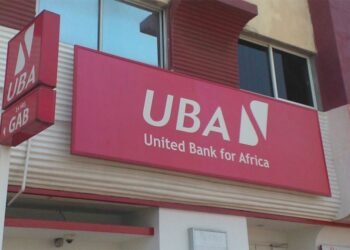The Central Bank of Ghana (BoG) has charged stakeholders to present more comprehensive and consistent data in the financial technology space to aid in monitoring the progress of financial inclusion.
According to BoG, this step is a major movement to help trace and measure gaps in financial inclusion, and as well design appropriate evidence-based interventions, and monitor their implementation and effectiveness.
Speaking at a presentation and public engagement on the 2021 Ghana Findex Report organised by the Institute of Statistical, Social and Economic Research (ISSER), the Second Deputy Governor, Elsie Addo Awadzi said both supply and demand-side data are key to help achieve these objectives.
The Deputy Governor communicated that the Bank of Ghana has implemented a new online reporting and analytics supervisory tool that helps to harmonize data collection from various licensed institutions and improves data analytics and reporting.
“For data to help achieve these objectives, it should be comprehensive, high-quality, consistent, reliable, accessible, and connected with other related databases.
“There are currently several key data sources that feed into policy formulation, regulation, and design of financial products and services in Ghana. These include indicators published by the World Bank, IMF, AfDB, and many others, as well as homegrown sources.”
Elsie Addo Awadzi
The Central Bank has been urged to brainstorm the need to pull together various data sources, avoid duplication of efforts, and improve on data quality, accessibility, and governance to support an inclusive, sustainable, and resilient financial sector.
Ghana Agrees To End Monetary Financing
More so, the Bank of Ghana has signed a memorandum of understanding (MoU) with the government to halt monetary financing.
According to the Governor of BoG, Dr. Ernest Addison, the MoU will enter into force once the International Monetary Fund gives a greenlight for Ghana’s pending loan.

The governor expressed believe that Ghana’s deal with the IMF will be approved before the end of May 2023.
Dr. Ernest Addison disclosed that the situation has since improved and financing assurances from external creditors are expected soon.
It can be recalled that Fund staff and the Ghanaian authorities reached a preliminary agreement on the three-year, $3 billion loan last December.
The MoU is a requirement of a pending loan package agreed with the IMF.
In a press conference on April 14, IMF African department head, Abebe Aemro Selassie said that IMF staff were almost ready to present their package to the IMF board. Fund staff were missing only “the required financing assurances from external creditors”.
Finance minister, Ken Ofori-Atta travelled to Beijing in late March for talks on debt, and reported “great progress on all fronts”.
After the March 2023 monetary policy meeting, the Bank of Ghana said that the two bodies had “finalized a Memorandum of Understanding on zero financing to the budget, which will be signed shortly”.
At the November 2022 monetary policy meeting, Addison spoke of “severe pressure on the Bank of Ghana’s overdraft facility available to government for short-term cashflow management”.
As of December 2022, the central bank had provided nearly 18.3 billion cedis ($1.6 billion at current exchange rates) of “loans and advances” to the state.
Read also: First National Bank Posts 23.6% Growth In Assets Value In 2022























